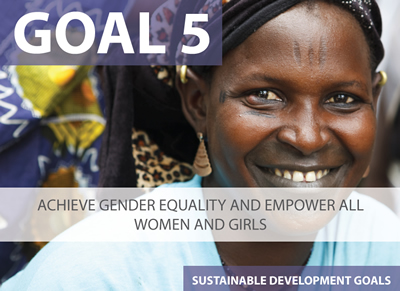The importance of trade for development – and the meaning of gender in it – can be determined by crunching sex-disaggregated data.
Since the adoption by the international community of the 2030 Agenda for Sustainable Development in 2015, the spotlight has been thrown on the role of women in economic growth, creating jobs and boosting trade.
But determining whether countries have hit Sustainable Development Goal 5 – achieving gender equality and the empowerment of all women and girls by 2030 – rests on collecting complex data that measures progress.
The task of breaking down general economic and social data by gender is known as “gender-” or “sex-disaggregation” and it is proving to be a vital tool in understanding how developing countries can do better and help women on the borderline between poverty and prosperity.
“The important contribution of women to development is increasingly well-understood,” Steve MacFeely, head of UNCTAD’s statistics department, said.
“Gender equality and the empowerment of women was an explicit goal of the Millennium Development Goals, Goal 3, from 2000 to 2015, as indeed was improving maternal health, Goal 5,” he said.
“Now the more integrated and ambitious goal of gender equality, emphasizing women as economic agents, is one of the objectives of the 2030 Agenda.”
Number crunching
Mr. MacFeely said that gender equality was not only a fundamental human right, but a necessary foundation for peace, prosperity and sustainability.
“Providing women and girls with equal access to education, healthcare, decent work, and representation in political and economic decision-making processes will fuel sustainable economies and benefit societies and humanity at large,” he said.
But measuring the contribution of women to economic transactions like international trade is a particularly complex challenge that involves linking merchandise and services trade data to business registers and, in some cases, other administrative data sources such as those on taxation.
UNCTAD uses a variety of global measurements available, and a summary of these are detailed its statistical report on the Sustainable Development Goals. Among them are the:
- UN Development Programme’s Global Gender Gap Index
- World Economic Forum’s Gender Inequality Index
- Economist Intelligence Unit’s Women’s Economic Opportunity Index
- Organisation for Economic Co-operation and Development’s Social Institutions and Gender Index.
“Sex-disaggregated data will be very important for measuring several Goal 5 targets,” Mr. MacFeely said. “But given the interconnected nature of the SDGs, sex-disaggregated data will play an important role in the measurement of several other targets too.”
Planning ahead
“Take for example, something as simple as population. Understanding the gender and age structure of a population is essential for modelling fertility rates and population projections,” he said.
“Having sound estimates of population will help us to plan many aspects of development – likely demand for schools and hospitals, housing and so on.”
Simonetta Zarrilli of UNCTAD’s trade and gender programme explains how understanding sex-disaggregated data can feed into effective policy recommendations for countries pursuing sustainable development.
“Knowing what are the male-intensive and the female-intensive sectors of the economy also helps us to get an idea of what the likely impact of a trade reform will be on male and female employment,” she said.
“In other words, if we know that a sector employs a large share of women and this sector will be exposed to strong competition because of a trade agreement or reform, then we can imagine that there may be many dismissals and alternative employment opportunities will need to be found for those women who could lose their jobs.”
Policy choices
“In this way, data analysis allows policy recommendations to be formulated,” Ms. Zarrilli said.
UNCTAD uses World Bank Enterprise Surveys for data on the share of female employment in companies.
“We then match those data with tariff changes using World Integrated Trade Solution (WITS) software, which provides access to data on international merchandise trade, tariff and non-tariff measures,” Ms. Zarrilli said.
“The match allows us to assess what a change in tariff may mean for female employment at the firm level and even at the occupational level.”
UNCTAD’s Trade and Gender Toolbox methodology supports policymakers who want to get a clear picture of which productive sectors affect women most and allows them to measure the likely impact of future trade reforms on women's livelihoods in these and other sectors.
This innovative instrument, sponsored by the government of Sweden, contributes to ensuring that trade plays its role as a tool for inclusive development and for the economic empowerment of women alike.

